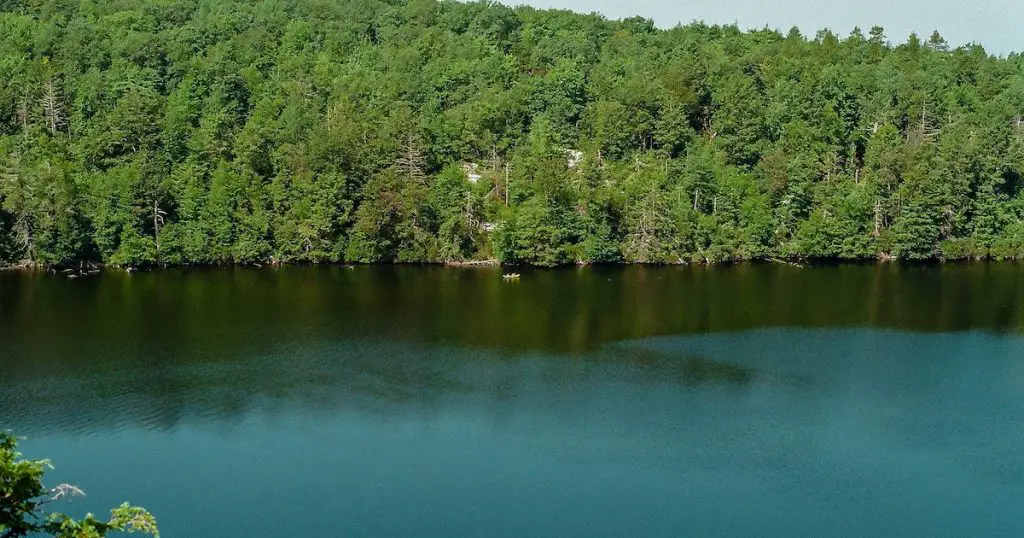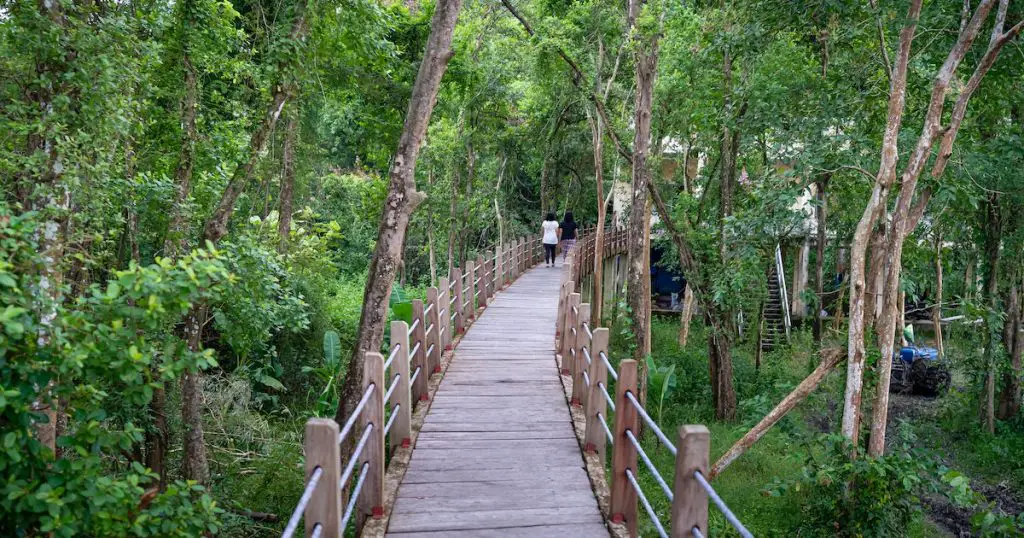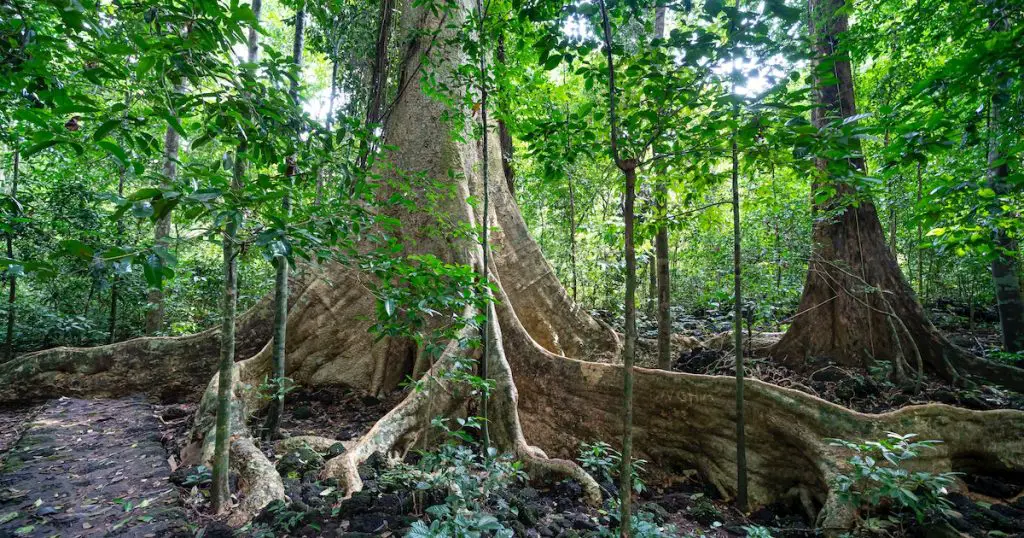Prescott National Forest, spanning over a vast 1.25 million acres, is an iconic part of Arizona’s landscape. Steeped in history and boasting some of the state’s most picturesque trails, the forest attracts countless visitors every year.

But these trails aren’t just paths in the woods; they’re ecosystems, stories, and experiences in their own right. Maintaining and preserving trails in Prescott National Forest is, therefore, not just an act of conservation but a promise to future generations. Let’s delve into the nuances of this task.
Understanding the Basics: Anatomy of a Trail
At first glance, a trail might seem like a simple path cut through nature, but beneath its surface lies a complex anatomy engineered for sustainability, user experience, and ecological balance. Within realms like the Prescott National Forest, understanding this anatomy is paramount.
Beginning with the trail’s “tread,” or the actual walking surface, its composition and width are designed to handle anticipated user traffic while minimizing environmental impact. Adjacent is the “trail corridor,” ensuring a clean and safe space free from obstructive branches or potential hazards.
“Outsloping” is the subtle angle of the tread, directing water away to prevent erosion. Features like “switchbacks” and “grade reversals” manage elevation changes and water flow, respectively. Meanwhile, “berms” and “drainage ditches” are often integrated to further control runoff and maintain trail integrity.
By understanding these elements and more, we gain a deeper appreciation for the careful planning and design that go into every step we take on these pathways through nature.
How Trails are Formed: Natural vs. Man-made
Nature has its own way of carving paths. Animal migrations, water streams, or even consistent winds can lead to natural trails. Over time, these paths become more defined due to repeated use, either by animals or even indigenous communities.
On the other hand, man-made trails are consciously designed, keeping in mind the visitor’s experience and the preservation of the forest’s ecosystem. It’s not as simple as clearing a path. Soil types, gradients, and local flora and fauna are all taken into account.
The American Trails organization sheds light on the art of trail building, emphasizing the importance of sustainable practices.
The Different Components of a Trail
Each trail has multiple layers to it:
- Surface: This can range from natural ground, compacted soil, gravel, or even boardwalks in wetter areas.
- Drainage: Proper drainage ensures trails aren’t washed away or eroded. They prevent puddles which can be a hazard and degrade the trail structure.
- Signage: A key element to guide hikers and provide them with necessary information.

Trail designs consider these elements, ensuring longevity and minimal environmental impact. An in-depth look into this can be found at the National Trails Training Partnership.
Environmental Impacts on Trails
While trails offer a connection to nature, they’re also at the mercy of the environment. Both natural phenomena and human activities can cause significant wear and tear.
Erosion is a natural process. Wind, rain, and even foot traffic can wear away the surface of trails. Over time, this can lead to wider paths, loss of vegetation, and even destabilization of the soil. According to National Park Service, understanding erosion patterns is vital for effective trail maintenance.
Effects of Extreme Weather Conditions
From intense rainfall to prolonged droughts, extreme weather events can dramatically impact the health of trails. Flooding can wash away parts of the trail, while droughts can lead to cracks and crevices.
It’s essential to regularly assess trails, especially post-extreme weather, to ensure their safety and sustainability. Resources like Climate Central provide insights into the potential impacts of changing weather patterns on outdoor recreational spaces.
It’s not just nature; humans, too, play a role in the wear and tear of trails. Popular trails can see thousands of feet every day, leading to rapid degradation. Activities like mountain biking or horseback riding, if not regulated, can lead to more profound impacts. Leave No Trace offers principles that every visitor should follow to minimize their footprint.
The Science of Trail Maintenance
Trail maintenance is not just a matter of clearing paths and setting markers; it’s a meticulous science grounded in understanding the interplay between nature and human intervention. Within spaces like the Prescott National Forest, every trail has its unique set of challenges, be it soil composition, gradient, or local flora and fauna.
Understanding erosion patterns, predicting wear zones, and recognizing the needs of the local ecosystem are all critical. Techniques such as grade reversals, out sloping, and the establishment of water bars are all backed by careful scientific consideration. Furthermore, there’s the biology of trail maintenance, ensuring that interventions don’t disrupt local habitats or introduce invasive species.
In sum, trail maintenance is a blend of geology, ecology, engineering, and more, all converging to ensure our trails are not only accessible but also sustainable for generations to come.
The Principles of Sustainable Trail Design
Sustainability is not just a buzzword; it’s a necessity. It means ensuring that the trail remains intact and usable for future generations while causing minimal environmental impact. A sustainable trail should account for erosion, efficiently manage water runoff, and be durable against heavy usage.
Trail associations like the Pacific Crest Trail Association are exemplary in implementing these principles.
Trail Hardening: Methods and Materials
Trail hardening is a technique to reinforce the trail surface, making it more resistant to wear and tear. This can be done using gravel, wooden planks, or even stone paving. Each method has its own set of advantages and environmental considerations.
The choice often depends on the trail’s location, usage, and the surrounding ecosystem. You can explore more on these techniques through the Trails Design and Management Handbook.
Constant vigilance ensures that trails remain safe and sustainable. Regular assessments help identify potential problem areas, from erosion spots to damaged signage. A proactive approach, as endorsed by the Forest Service of the USDA, can save both time and resources in the long run, ensuring that the trails remain open and enjoyable for all.
Effective Drainage Systems for Trails
In trail management, especially within vast natural expanses like the Prescott National Forest, effective drainage systems are often the unsung heroes. These systems prevent water accumulation, which can cause erosion, muddy patches, and trail degradation.
By efficiently channeling rainwater and runoff away from the trail’s surface, drainage systems ensure the pathways remain intact and user-friendly, regardless of weather conditions. Furthermore, they play a crucial role in preserving the surrounding environment, preventing waterlogged areas that can harm plant roots and disrupt local ecosystems.
In essence, a well-designed drainage system is the foundation of a trail’s longevity and sustainability, silently working behind the scenes to keep our trails safe and beautiful.
The Importance of Water Management on Trails
Poor drainage can lead to a multitude of problems. Waterlogged trails can become breeding grounds for insects, degrade faster, and become unusable during wet periods. Plus, standing water can erode the trail over time, causing further damage.
The importance of drainage is highlighted in this article by The Nature Conservancy.
Common Drainage Techniques
Managing water on trails is an art and science combined. Here are some techniques used:
- Water Bars: These are obstructions placed across the trail to divert water off the trail.
- Grade Reversals: A subtle change in the trail’s elevation to encourage water to drain off rather than flow down the path.
- Culverts: Pipes or tunnels that carry water under a trail, road, or other obstructions.
Each of these techniques has its own place and application. For a deeper dive into these techniques, Trailsource provides a wealth of information.
Addressing Problem Spots
Even with the best drainage systems in place, some spots can become problematic. Regular monitoring can help identify these early on.
Once spotted, interventions like rerouting the trail, adding additional drainage structures or even temporary closures can be considered. The Trails Preservation Alliance has numerous case studies on tackling such issues.
Vegetation Management Along Trails
Vegetation is an integral part of any trail. It adds beauty, provides shade, and even helps with soil stabilization. But, managing it is essential to ensure a balance between nature and trail usability.
Native plants are those that have evolved in a specific region over thousands of years. In the context of Prescott National Forest, these plants play a pivotal role. They support local wildlife, help in soil conservation, and are uniquely adapted to the region’s climate and conditions.

Their roots anchor the soil, preventing erosion. Plus, being native, they require less maintenance as they are naturally adapted to local pests and diseases. Organizations like the Native Plant Society of Arizona actively promote the importance and conservation of native flora.
Combatting Invasive Species
An invasive species is a plant, fungus, or animal species that is not native to a specific location and has a tendency to spread to a degree believed to cause damage to the environment, human economy, or human health. These species can outcompete native plants, alter soil chemistry, and even impact local wildlife.
For trails, they can also obstruct pathways and change the natural landscape. The National Invasive Species Information Center provides resources and tools for the identification and management of these invasive threats.
Techniques for Vegetation Control and Restoration
Maintaining a balance is crucial. While we want to ensure trails are clear and accessible, the goal is also to ensure the ecosystem thrives. Some techniques used include:
- Selective Pruning: Removing only obstructive or potentially harmful vegetation without disturbing the overall ecosystem.
- Replanting: If areas get denuded, replanting with native species helps restore the balance.
- Natural Barriers: Using rocks or logs to discourage growth in certain areas without the use of chemicals.
The Trail Management Services offers a plethora of knowledge on these methodologies, ensuring trails remain in harmony with nature.
Addressing Trail Overuse
The popularity of a trail can sometimes be its own enemy. Overuse can lead to rapid degradation, impacting both the environment and the user experience.
Overuse is evident through worn-out paths, the absence of vegetation where it once thrived, increased litter, and even instances of soil compaction. Sometimes, these signs are subtle. An article by REI Co-op highlights the various markers of overuse and the implications they carry.
Solutions: Rerouting, Resting, and Trail Rotation
Overused trails might need a break. This could mean temporary closures, rerouting to allow certain sections to regenerate, or even promoting alternate trails to distribute foot traffic.
The idea is to let nature heal. The International Mountain Bicycling Association has some compelling insights on these methods from a mountain biking perspective, but the principles apply broadly.
Educating the Public on Responsible Trail Use
Knowledge is power. Educating visitors on the impacts of their actions can make a significant difference. Simple acts like sticking to the path, carrying out trash, and not picking plants can go a long way.
Organizations like the Center for Outdoor Ethics offer resources on instilling responsible behaviors in outdoor enthusiasts.
Signage and Wayfinding
In the intricate web of trails like those in the Prescott National Forest, signage and wayfinding serve as the compass and guidebook for every adventurer. These elements are not just tools for direction but are integral to creating a seamless and enriched outdoor experience.
Good signage ensures that visitors can navigate the trails with confidence, minimizing the risk of getting lost or straying into sensitive ecological zones.
Wayfinding, on the other hand, is an art that blends the practicality of direction with the aesthetics of the environment, allowing the natural beauty of the area to shine while still providing clear guidance. Together, they form the silent guardians of the trail, guiding every step while preserving the sanctity and wonder of the natural world.
The Importance of Clear and Informative Signage
Signage serves multiple purposes: it guides hikers, offers educational information, provides safety warnings, and even conveys conservation messages. Proper signage can prevent users from straying off paths, thereby reducing the chances of habitat disturbance.
The National Park Service offers guidelines on effective sign placement and design.
Design Principles for Effective Trail Signs
Signs should be easy to read, durable, and strategically placed. They should convey the message quickly, considering that trail users might be in motion. Materials chosen should withstand the elements. For a deeper understanding, the World Trails Network showcases best practices from trails around the world.
Like trails, signs too need maintenance. They should be checked for wear and tear, vandalism, and even relevance. As trails evolve, the signage should too. The Trail Management Services again provides insights into ensuring that trail signs remain up-to-date and effective.
Volunteer Engagement in Trail Maintenance
Harnessing the power of community through volunteer engagement is paramount for the upkeep of trails in places like the Prescott National Forest. When locals and enthusiasts roll up their sleeves, not only do they lend a physical hand in maintenance, but they also imbue the trails with a sense of collective ownership and stewardship.
This hands-on involvement fosters a deeper connection between the trails and their users, creating a vibrant community that actively champions the trails’ longevity and ecological well-being. In essence, volunteer engagement transforms mere pathways into community treasures, nurtured and protected by those who tread upon them.
The Benefits of Community Involvement
When the community gets involved, there’s a deeper connection formed with the trails. This ensures that users are more responsible, and there’s a collective effort towards conservation.

Moreover, volunteers bring in a fresh perspective and enthusiasm. The Volunteers for Outdoor Arizona exemplify the potential of such engagements.
Organizing Successful Trail Workdays
Planning a trail workday involves logistics, ensuring safety, providing tools, and making the activity engaging. It’s not just about work; it’s about fostering a sense of community.
For those keen on organizing such events, American Hiking Society offers comprehensive guides.
Training and Equipping Volunteers for Trail Work
While enthusiasm is vital, proper training ensures that the work done is effective and sustainable. From understanding the tools to recognizing the nuances of trail ecosystems, a well-trained volunteer is an asset.
Trail Academy provides various resources for those looking to hone their trail maintenance skills.
Funding and Support
The lifeblood of any conservation effort, especially in maintaining and preserving trails in areas like the Prescott National Forest, comes from robust funding and unwavering support. Ensuring these trails remain accessible and ecologically balanced requires a combination of governmental grants, community-backed initiatives, corporate sponsorships, and passionate individual donors.
It’s a symbiotic relationship where the trails offer unparalleled experiences and, in return, gain the resources to sustain and thrive. Such financial backing guarantees that the trails’ beauty, heritage, and ecological value continue to be celebrated and cherished by generations to come.
Sources of Funding for Trail Maintenance
Funding can come from various sources: government grants, private donations, corporate sponsorships, or even crowdfunding campaigns.
Exploring and diversifying these sources ensures consistent support. The National Forest Foundation showcases different funding avenues available for trail maintenance and conservation.
Engaging Corporate Sponsors
Engaging corporate sponsors can be a win-win situation. Companies get to showcase their commitment to environmental stewardship while trails benefit from the resources. To effectively engage sponsors, it’s crucial to present them with clear benefits, both in terms of branding and community engagement.
The Partnership for the National Trails System provides guidelines on building meaningful partnerships with businesses.
Community Driven Funding Initiatives
Crowdfunding campaigns and community fundraising events can play a pivotal role. They not only raise money but also heighten local awareness about the trails. Websites like GoFundMe or Kickstarter can be leveraged for crowdfunding.
Moreover, hosting local events such as trail marathons or clean-up drives can be beneficial both in terms of fundraising and community bonding.
Allocating Funds Effectively
Once funds are raised, effective allocation is key. This means prioritizing projects, ensuring transparency in spending, and regularly evaluating the impact of the funded activities. Efficient fund management assures donors and sponsors that their contributions are making a tangible difference.
For insights on best practices in fund allocation, the Outdoor Industry Association provides comprehensive resources.
FAQ: Maintaining and preserving trails in Prescott National Forest
How often should trails in Prescott National Forest be maintained?
Ideally, trails should be inspected seasonally, but maintenance frequency depends on trail popularity, recent weather events, and observed wear and tear. Regular checks ensure that any issues are addressed promptly.
Are there specific plants that should be prioritized for preservation in Prescott National Forest?
Native plants, which have adapted to the region’s unique conditions over thousands of years, should be prioritized. They support local wildlife, conserve soil, and maintain the area’s ecological balance.
How can I contribute to maintaining the trails in Prescott National Forest?
Community involvement is vital! Join volunteer groups, participate in trail workdays, or donate to organizations dedicated to the cause. Every effort, big or small, plays a role in preserving our trails.
Conclusion
Maintaining and preserving trails in Prescott National Forest is more than just ensuring clear pathways for hikers and bikers. It’s about safeguarding an ecosystem, preserving a heritage, and ensuring future generations have the same pristine nature experiences that we do today.
It involves a multi-faceted approach, from understanding the vegetation to managing trail overuse, and from clear signage to effective fund allocation. As we continue to enjoy the trails, it’s essential to remember the responsibility that comes with it.
By staying informed, being involved, and respecting the guidelines, each one of us can contribute to the lasting legacy of Prescott National Forest trails.



Leave a Comment
You must be logged in to post a comment.